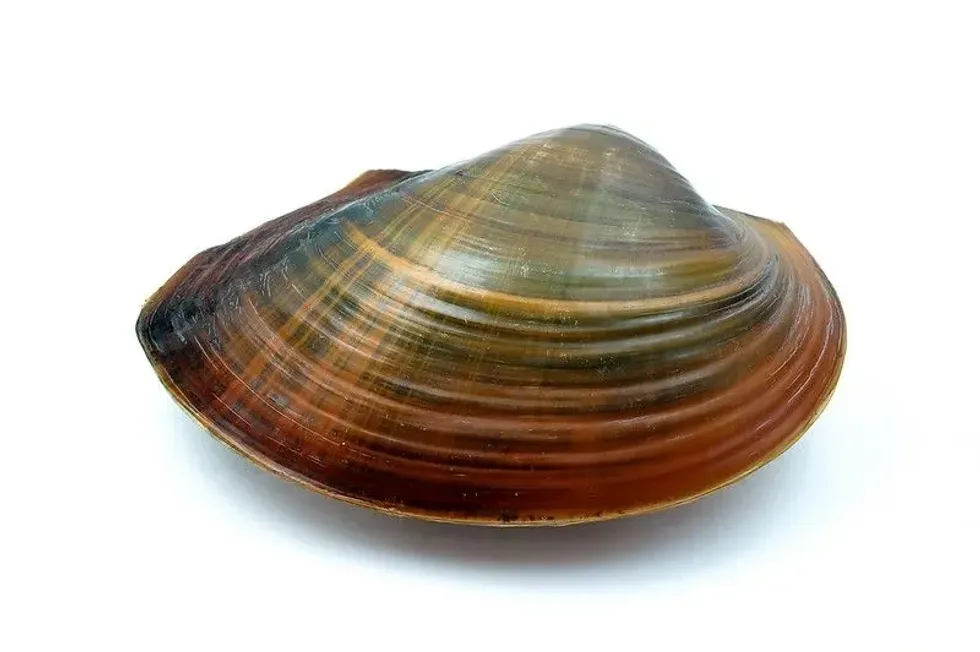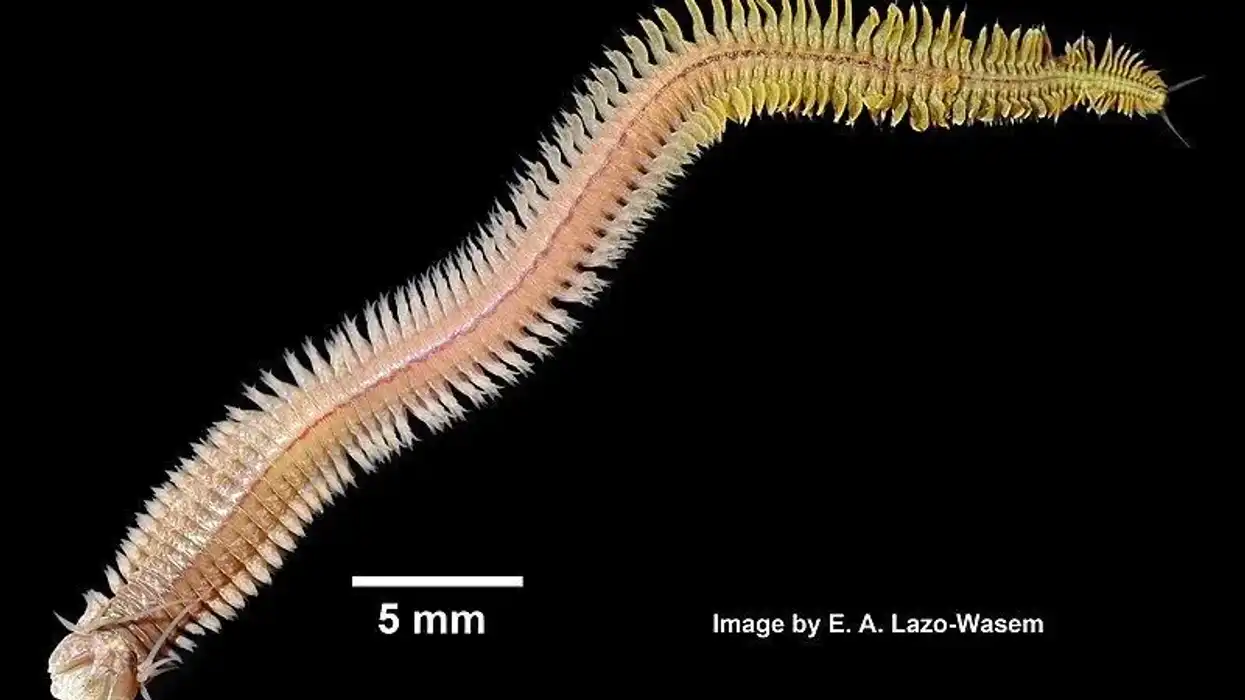Freshwater mussels are a diverse and underappreciated species of animals. They are spread worldwide, and North America is home to a wide range of freshwater mussels species, especially by the Mississippi River. Historically, these mussels were a nutritious food source for Native Americans who also used the mussel shells to make utensils, jewelry, and tools.
With the emergence of industrialization in the 1800s in America, mussels became of great commercial value, with buttons made from their beautiful mussel shells. This industry was the beginning of the mussels' downfall and the degradation of freshwater ecosystems.
Aside from their uses for humans, mussels are incredible creatures with a diversity of colors, shapes, and sizes. They cannot see but can sense aquatic wildlife around them.
Mussels are naturally responsible for the clean water in rivers. Still, human activities like pollution and river dam construction have become a significant threat to their lives, endangering the species to the point where it could become extinct.
If you find our article on freshwater mussels interesting, you might want to check out these skate fish facts and Atlas beetle facts too.
Freshwater Mussels Interesting Facts
What type of animal is a freshwater mussel?
The freshwater mussel is a bivalve mollusk, meaning it is a two-shelled underwater creature.
What class of animal does a freshwater mussel belong to?
Freshwater mussels belong to the Palaeoheterodonta subclass of the Bivalve class.
How many freshwater mussels are there in the world?
There are 890 species of freshwater mussels globally, of which about 300 species are found in America.
Where does a freshwater mussel live?
Freshwater mussels live on waterbeds of flowing water bodies like rivers and streams. They can also be found in the muddy depths of ponds and lakes.
What is a freshwater mussel's habitat?
The freshwater mussel's habitat is in fresh and flowing water channels like rivers, streams, creeks, canals, lakes, and ponds.
Who do freshwater mussels live with?
Freshwater mussels live on waterbeds with their kind and other animals found in water bodies. They can also live in human-made aquariums.
How long does a freshwater mussel live?
The average lifespan of mussels is 40 to 60 years. However, they can live for up to 100 years.
How do they reproduce?
Mussels have a unique way of reproducing. The freshwater mussel's life cycle begins when males release sperm into the water, and females store their laid eggs in gills called 'marsupia'.
Through siphons, the female takes in sperm that fertilizes the egg, leading to the development of glochidia (mussel larvae).
Using the host infection method, the female mussel expels glochidia to attach itself to fish gills or fins. The process can either naturally occur when a fish is around or by tricking and attracting host fish with a display of tissues that appear to be like fish fins.
After attaching itself to the correct host fish, the glochidia undergo a metamorphosis and grow into juvenile mussels, depending on the temperature and mussel species. Once they are fully developed microscopic beings, the glochidia detach themselves from the host fish and embrace their new habitat. They become fully grown mussels within two to three years of birth.
What is their conservation status?
With over 800 mussels species worldwide, the conservation status of freshwater mussels varies for different species, but a number of them are Endangered, Threatened, and of Special Concern, primarily in North America. Many species have also been declared extinct in the past.
Freshwater Mussels Fun Facts
What do freshwater mussels look like?
Freshwater mussels are bivalves, meaning they have a pair of hinged shells that are flat and oblong, holding within them a soft body. The shells can have different colors like green, yellow, black, or brown. They also have patterns, ridges, and textures. On the inside, shells can have pink, gray, purple, or pearl colors.
Mussels may not have eyes, ears, or noses like other animals, but they have a stomach, heart, kidney, and mouth like humans and use gills for breathing in oxygen. They have muscles holding the shell edges together and a small muscular foot used to move across on sand and gravel.
They have two separate openings for drawing in food and one to expel waste and filtered water.
How cute are they?
Mussels are cute small creatures with shells. Their attractiveness depends on the texture or pattern of the outer shell.
How do they communicate?
Mussels do not communicate like humans or other animals. They probably have visual, tactical, and ultrasonic communication modes since they can detect touch and vibrations. They can also observe changes in light and temperatures.
How big is a freshwater mussel?
Mussels can differ in size depending on the species. For example, some lilliput freshwater mussels are as small as 1.5 in (3 cm), whereas large mussels like washboard freshwater mussels can grow to be 11 in (26 cm) long.
Can freshwater mussels move?
Mussels remain in one place for most of their lives. When they do move, mussels move by putting their muscular foot into sand or on gravel and pulling themselves forward, inching their way along the waterbed. This helps them to move away from rivers or streams that have lowered water levels.
How much does a freshwater mussel weigh?
Being small in size, they can weigh between 0.07-0.20 lb (0.033-0.093 kg).
What are their male and female names of the species?
Male and female freshwater mussels are simply referred to as mussels. Although they do not have different names, the genders are differentiated through shape and size.
What would you call a baby freshwater mussel?
Baby freshwater mussels are called glochidia. They are also referred to as juvenile or young mussels.
What do they eat?
Algae, bacteria, plankton, and organic matter produced by the decomposition of organisms are all food for freshwater mussels.
Are they dangerous?
Mussels are naturally non-dangerous small beings. However, today, due to increasing human populations causing pollution, they can become poisonous because of the water's toxic content.
Would they make a good pet?
Yes, mussels can be good pets, although they do not communicate. However, it is essential to create a suitable habitat for your pet mussel to live in.
You will need a freshwater mussels aquarium with gravel-sand, stones, pebbles, and water plants that are all readily available in markets. You can keep mussels, fish, and other aquatic animals together to create an ideal mussel environment.
Did you know...
In the mid-1800s, John F. Boepple introduced button making using freshwater mussels. Pearls and shells were the new button industry, making the small town of Muscatine, Iowa, the 'Pearl Button Capital of the World'.
Mussels have numerous fun, common names because of their appearances. Some of them are called monkeyface, sheepnose, heel splitter, rabbitsfoot, threehorned wartyback, pigtoe, and snuffbox.
During reproduction, some mussels species release collective bunches of larvae called 'super conglutinates' that appear as appetizing fish eggs to the fish hosts. After it is eaten, the conglutinate breaks and releases glochidia which attach themselves onto the fish gills.
Shells serve as a significant source of the minerals calcium, nitrogen, and phosphorous to freshwater bodies. Large mussel shells can be used as jewelry holders, soap holders, salt bowls, and food presentations.
Mussels have clear or bluish blood. Some of them also have red blood.
Birds, raccoons, otters, ducks, crayfish, geese, and baboons relish preying on this mussel species.
They are long-living creatures that record their life by adding rings to their shells, just like trees.
Can you eat freshwater mussels?
The freshwater category of mussels was historically a great food source to Native Americans. However, today they are not enjoyed as much as saltwater mussels or marine mussels.
Eating freshwater mussels may not be considered enjoyable by everybody. Some have described them to taste like dirt, while others love these cooked mussels. You can find them in most seafood markets.
Cooking mussels takes about five to 10 minutes. First, they are rinsed in cold, clean water; then mussels are added in a pot with just enough water to cover them, after which they are left to cook on a medium to high flame.
They can be found in seafood markets worldwide. Freshwater mussels recipes are found in lots of cookbooks and all over the internet.
Freshwater mussels are found mostly by river coastlines and in the deep waters of muddy lakes.
What is the importance of freshwater mussels?
The species plays an important role in maintaining the water quality. Today, a diversity of mussel species are under significant threat due to human activities.
Increasing human populations have led to water pollution, with industries draining their waste into rivers, deteriorating these rivers' water quality, impacting different host species of fish, aquatic wildlife, and plants. The toxicity of the water affects the fish, leading to disruption of reproduction in the mussel species.
The construction of dams over rivers has also led to the destruction of numerous delicate mussel species found in river beds. Another cause for dying freshwater mussel species is introducing non-native invasive species like zebra mussels which feed on freshwater mussels or eat the fish hosts.
Freshwater mussels are unsung heroes. They are natural filter feeders and use their gills to clean water by feeding on decaying planktons, maintaining the water quality for the whole habitat.
Due to their longevity, they can help maintain the water quality of rivers, streams, creeks, and ponds for a long time. Activists from all over the world support the conservation of this diverse group.
Here at Kidadl, we have carefully created lots of interesting family-friendly animal facts for everyone to discover! Learn more about some other arthropods including the Giant African millipede or the pond skater.
You can even occupy yourself at home by drawing one on our Freshwater mussels coloring pages.










